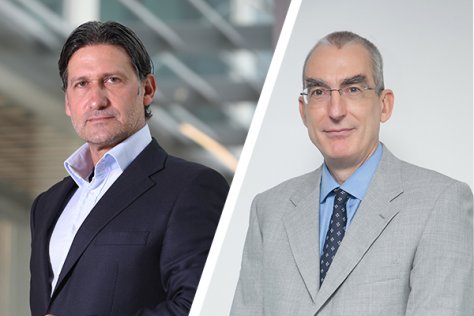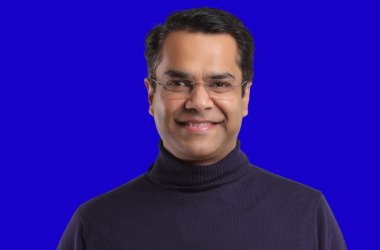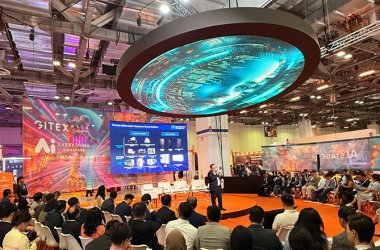HPE’s Vice President and Managing Director for the Middle East Dr Fabio Fontana and Global Presales Strategic and Chief of Digital Innovation Middle East Lorenzo Gonzales told tahwultech.com about the company’s approach to AI and the aspiration behind their first Digital Life Garage.

WHAT IS HPE APPROACH TO ARTIFICIAL INTELLIGENCE?
FF: We work on three important pillars with AI: technology, people, and investments.
First of all, we need to address the technology aspect: a recent study by Gartner says that between 75% and 80% of spending is to pay for the current costs of traditional IT. Only 20% is spent on innovation.
We need to fundamentally change the philosophy of spending. This doesn’t just concern the CIO, the transformation needs to come from the top. Take for example the UAE, the first nation to appoint a Minister for AI to drive change. In the same way, the CEO needs to have an understanding of how AI can change the digital transformation agenda of their organisation. You need to start thinking differently and ask yourself: “how can I spend less on operational and more on innovation?”.
A study by McKinsey says that 70% of digital transformation projects fail due to people’s incapability to change. Let’s say the CEO decides to spend 30% on innovation instead of 20% – if they doesn’t also convince their employees, change is not likely to happen. Finally, when we look at the financial side businesses need to start thinking in a different way about the way they spend their money. It’s not just about CAPEX, organisations need to be more creative than that. Nowadays companies tend to have a monolithic approach to the CIO’s spending, to change and to CAPEX spending. We believe the better approach is pay as you grow. For example, HPE’s GreenLake gives organisations the possibility to make a five to seven years plan on a pay as you grow basis. All these changes, technology, people and financial, need to be addressed by CEO all together, not one by one.
LG: At HPE we try to take advantage of the technology we have to determine outcomes. There are a lot of possibilities enabled by new technologies, but currently these are approached in a traditional way. Organisations buy the technology, the solutions, the use case. But the real way to deliver outcomes is by bringing all these together and combining the aspirational outcome with these possibilities in a way that prioritises long term results, while also learning and flexibly adjusting what you can do day after day. AI is used to recognise and “count” people, but it can take this information to do other things. If we do that by design, we can quickly test new ideas, adopt or drop them depending on each case, or even expand and adjust them rather than trying to create new verticals. When we talked about AI, we had a discussion about how to recognise a person, and while we can recognise faces, we can also recognise a voice, or biometrics, or count how many people there are in an area by scanning badges. You can do a number of things and you learn all the time from the information you gather, so you can deliver on a case by case basis.
WHAT IS HPE DOING TO SUCCESSFULLY IMPLEMENT AI?
LG: Especially with this technology in the UAE, we hear a lot of great ideas, great innovators. There are some brilliant young people in the region. We are opening the first HPE’s Digital Life Garage because we want to help to put all of this in the right business context to make it work. Digital transformation in general, and specifically AI adoption, is about leveraging the full potential of the technology whilst delivering step by step cumulative outcomes that you can rely on. One of the concepts behind the DLG is to create that.
FF: When it comes to AI, HPE is aiming to have the infrastructure and the application side work together. The DLG is a good opportunity to make this happen – it brings an ecosystem of people together to develop a combination of infrastructure and application pillars. Take as an example the iPhone, it was successful because software and hardware glued together to work perfectly. In the same way AI needs the infrastructure and application combined to work.
WHY DID YOU CHOOSE THE MIDDLE EAST TO OPEN THE FIRST HPE’S DIGITAL LIFE GARAGE?
LG: One year ago, I was assigned to the Middle East to drive digital innovation. At the time the idea was to help this vibrant and innovation- focused ecosystem to grow. We decided to open the first HPE’s DLG here exactly because of this kind of ecosystem and because of the aspiration and momentum that we have here. It’s something very unique to us. We know we can apply it elsewhere quite easily, but the UAE is where the idea sparkled.
FF: I believe there are three things here than you can hardly find in
any other country. First of all, the speed and agility. If you have an idea here, you can have the support of the government very quickly. In any other country where there is constant political party rivalry, it takes time to make decisions, while here every decision is made rapidly. The second thing that makes this country unique is its diversity. There are 180 different cultures in the UAE, 31 in our office alone. If you look at the transformations of the last years, it’s all about diversity and inclusion. You can have a lot of smart, great ideas, but it’s with diversity that you can really make a difference. The last thing is the strong vision the UAE, and the ME region in general, can offer us. Speed, diversity and vision all in one place – It’s like winning at bingo!
WHY DO YOU THINK DIVERSITY IS SUCH AN IMPORTANT ASPECT IN THE TECH INDUSTRY?
LG: Diversity is inspirational in what we do. There’s no predefined bias here. I work globally and personally, the level of daily conversation and input I have while I’m here is incomparable. It’s very broad and it gives us the inspiration to create something new.
FF: Removing cultural bias is very important in our industry. I worked in Silicon Valley for many years and obviously I can’t say there isn’t diversity there as well. You can find people from many different cultures, but 90 percent of them were born and grew up in the US. They have an “American” mindset. The real diversity is here. People here are themselves. Diversity gives us the possibility to bring people and ideas together, and that’s the central point of DLG.
WHAT WAS THE ASPIRATION BEHIND THE DLG?
LG: The DLG is a space to co-innovate, where everyone can bring their own contribution to build together outcomes that are more than just the normal business to tech requests. In the past it was just about allowing IT to deliver response, but now you can’t separate business and tech, they are interlinked. My aspiration with the DLG was to bring great minds from different backgrounds together in a room. The main revolution I want to bring to our partners is to build a young ecosystem on top of a traditional approach. I believe it’s all about a combination of the two, putting together the energy and creativity of our youth with the capability to execute of a more experienced person. I think it’s a critical mix to make things really work.





